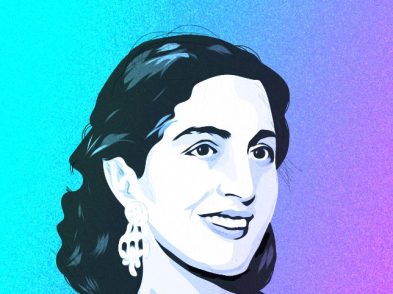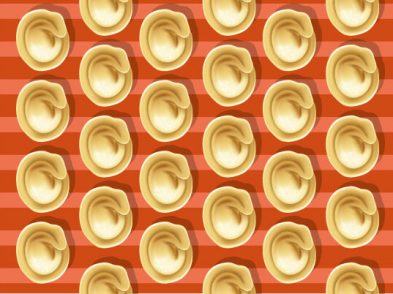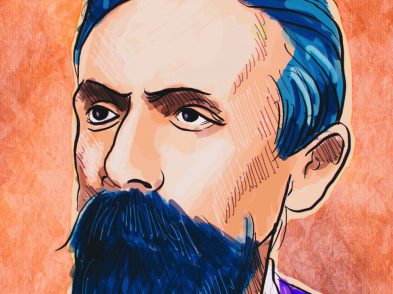The white turban covering her jet-black beehive hairstyle, the heavy black eyeliner, long false eyelashes and bright red lips all went out with the 1960s. Yet such outdated and eccentric attributes are what make Moira Orfei instantly recognisable to Italians when they see her face on billboards, announcing the arrival of her circus in town.
Miranda Orfei, a name she later changed to Moira, was born in Codroipo (Udine) in December 1931, into one of Italy’s most well-known family circus dynasties. Her father, Riccardo Orfei, was Bigolon the clown and her mother, Violetta Arata, was a circus performer. And in the tradition of Italian family-run circuses, Moira set up her own circus in 1960, called the Circo di Moira Orfei, which was to achieve success both at home and abroad.
Since then, she has performed as an equestrian rider, a trapeze artist, an acrobat, an elephant tamer (earning her the nickname of ‘Moira of the Elephants’), and a dove trainer. After a serious car accident put a stop to her public performances, she continued to appear in the final parade at the end of each show to salute her enthusiastic public.
When in 1961, she married the lion tamer Walter Nones, who now manages her circus, the bridesmaids who carried the flowers to the church were none other than her circus elephants. Her two children, Stefano and Lara, who are both stars of the circus, won the Clown d’Argent in 1989, a kind of Oscar for circus performers created by Princess Stephanie of Monaco at the Festival du Cirque de Montecarlo. In keeping with family tradition, her two grandchildren, Moira and Walter Jr., perform as acrobats together with their father, Micha Malachikne, Lara’s husband.
During the 1960s, the always charismatic and exuberant Moira, embarked upon another unexpected career almost by chance—the silver screen. Italian film producer Dino De Laurentiis discovered her and suggested she change her name. He was also responsible for giving her such a fashionable look. Since then, she has appeared in over 40 films, mainly costume dramas and comedies, including important films such as Casanova 70 with Marcello Mastroianni, and two with Totò. However, her most influential and successful film was Pietro Germi’s Signore & signori (1966). Germi was so impressed by her abilities he believed that had she studied acting, she would have become as great as Sofia Loren. Her latest film role was in one of Cristian De Sica’s Christmas burlesque comedies, called Natale in India (2003).
In recent years, thanks to what appears to be her inexhaustible verve, Moira has yet again updated her public persona for the television screen. She has appeared in many programmes, such as the Sunday afternoon entertainment show Domenica In, where she was a weekly guest throughout the 1995 season. She is also a familiar face on talk shows, where she expresses with great humour her opinions on everything.
Despite a stroke in 2006, the circus still remains the centre of Moira Orfei’s life and legend. For example, thanks to the collaborative effort by some of the most important circus families in the country, among them the Orfei, the Ente Nazionale Circhi (National Circus Body) was set up in 1948. A first in Europe, the aim of this trade association is to safeguard and spread the art of circus performing. Largely through its efforts, legislation was passed in 1968, which recognised ‘the social role of the circus’ in Italy. Today, further regulations ensure that circus owners meet strict criteria in order to obtain annual authorisations to operate. Nonetheless, to keep the tradition alive, the state is required to heavily subsidize circuses. It does so through the Fondo Unico dello Spettacolo (FUS).
However, the Circus Group of Lega Antivivisezione (LAV), an Italian animal rights organisation, and other similar groups, strongly criticize these subsidies. They cite the increasing amounts that Moira Orfei’s circus has been receiving over the years as an example. LAV would like to see circuses without animals. It maintains that the success of the internationally acclaimed Canadian Cirque du Soleil proves that animal-free circuses can work. This circus has not received any public funding for at least 10 years although it has earned, on its own, eight times the amount earned by all Italian circuses put together.
Faced with this kind of criticism, the Ente Nazionale Circhi argues that its members have the greatest respect for their animals and have no interest in maltreating them. It feels so strongly about it that, in answer to LAV’s call for a law abolishing the presence of animals in circuses before the Senate in 2000, Antonio Buccioni, vice president of the Ente, categorically stated: ‘We shall never give up our animals, we would rather go into exile abroad’.
How sad it would be to no longer see Moira’s face on billboards lining the streets in Italy.








